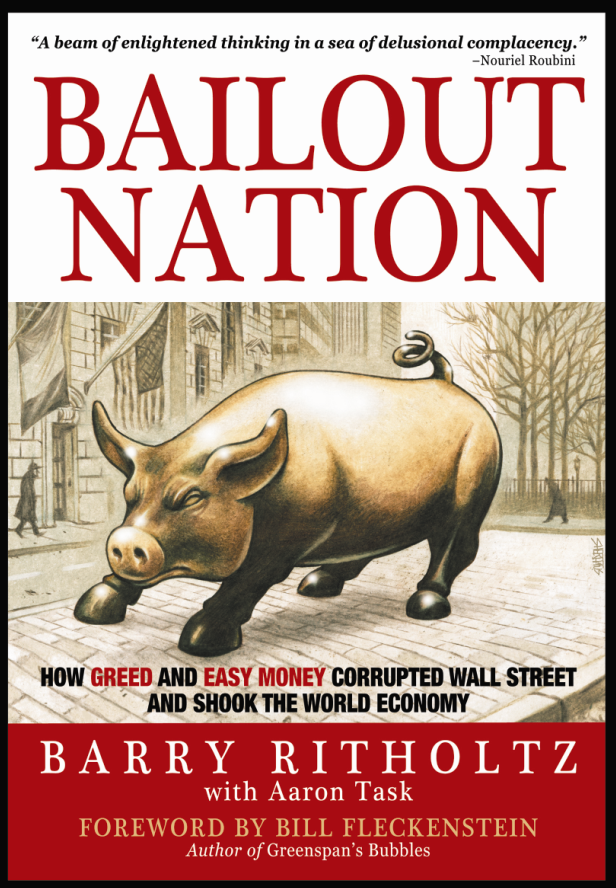There was a fascinating article in the Washington Post yesterday about Chairman Ben Bernanke. It very much paralleled my thinking in the early chapters about the Federal Reserve in Bailout Nation.
From the Washington Post:
“Famously soft-spoken, Bernanke is an unlikely revolutionary. He is, after all, a career economics professor who lacks the charisma of a skilled politician. He also happens to run an organization designed for inertia: Decision-making authority is shared with four other governors in Washington appointed by the president; the heads of regional Fed banks in 12 cities who answer to their own boards of directors; and a staff of 2,000 that is led by economists who spent decades working their way through a rigid hierarchy.
Yet in the past 18 months, Bernanke has transformed that stodgy organization, invoking rarely used emergency authorities. His decision to do so has drawn criticism — he has transcended traditional limits on the role of a central bank, stretched the Fed’s legal authority and to some, usurped the responsibility of political authorities in committing vast sums of taxpayer dollars.”
From Bailout Nation:
“From those relatively modest monetary and fiscal powers, the Federal Reserve has evolved into something that would be unrecognizable to its founders. Under the guise of economic expediency, the Fed has grabbed power, dramatically widening the areas of its responsibility. Since the 1990s, the Federal Reserve System, a private corporation registered in the State of Delaware, has behaved as though it were in charge of anything economic—moderating the swings of the business cycle, maintaining interest rates, supporting the value of depreciating assets, even intervening in the stock market.
During the economic collapse and credit crises, there was a distinct lack of financial leadership in the United States. With President Bush’s approval rating at historic lows, the White House showed little inclination for facing the storm. As the many crises began heating up in 2007, the leadership vacuum was apparent. It was into this empty space that the Fed inserted itself , seizing more and more authority. It wasn’t so much a power grab as a reluctant filling of the void. Steve Matthews, writing for Bloomberg, observed, “What started as a meltdown in the market for subprime mortgages has turned into a worldwide credit and economic crisis. Bernanke, now the Fed chairman, has responded with the most aggressive expansion of the Fed’s power in its 95-year history.”
Good stuff . . .
>
Source:
How Bernanke Staged a Revolution
Neil Irwin
Washington Post, April 9, 2009; Page A01
http://www.washingtonpost.com/wp-dyn/content/article/2009/04/08/AR2009040804401.html
The Improviser
Steve Matthews
Bloomberg Markets June 2008
http://www.bloomberg.com/news/marketsmag/mm_0608_story2.html



What's been said:
Discussions found on the web: